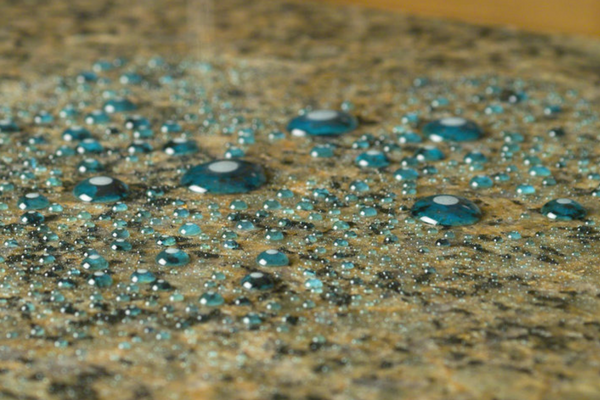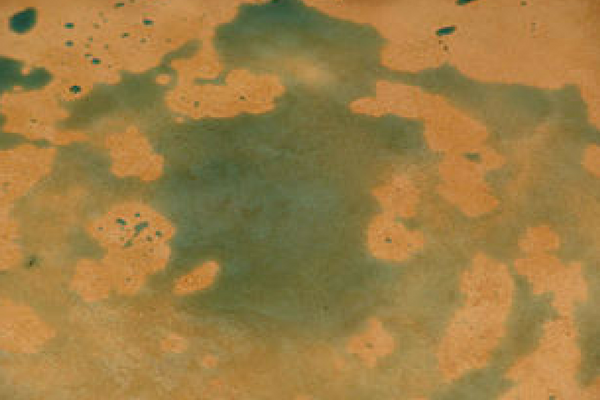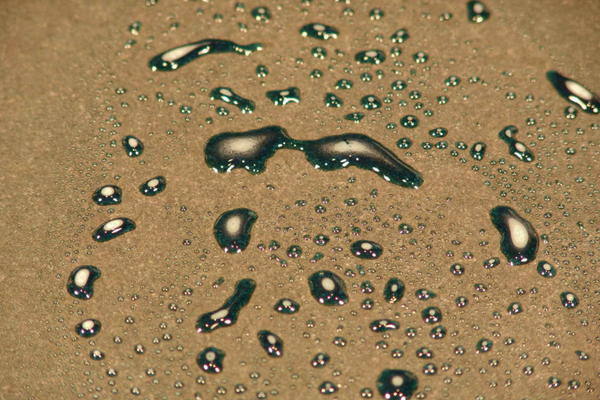Granite
Granite is formed from molten rock beneath the earth’s surface over millions of years under great pressure. It is mainly composed of fused crystals of Feldspar and Micah and like most natural stone is very porous.
Polished granite is one of the most often used stones for countertops in new and remodeled homes. But it is easily damaged by water, minerals, oils, acids and food stains if not sealed properly.
See Diamond Bond in action
Diamond Bond creates an impermeable barrier on granite, marble and other natural stone countertops As you can see in this video, on this Diamond Bond treated granite countertop, the blue dye simply beads up and is blown away! That’s just how easy Diamond Bond makes it to keep your valuable natural stone countertops looking brand new!
UNTREATED GRANITE

This beautiful piece of granite has not been sealed. Notice how the blue dye pools atop its surface. Over time, this can damage the stone.
TREATED GRANITE

Diamond Bond protects valuable stone surfaces by creating an impermeable barrier against spills, allowing them to be easily wiped away.
Travertine – also known as Honed Granite, has a matte finish which is achieved by using an abrasive process that polishes the granite just short of brilliance and luster. But the pores of Travertine are wide open, making it susceptible to spills and stains. Travertine absolutely must be sealed with a quality, penetrating sealer as soon as possible.
UNTREATED TRAVERTINE

Travertine is highly porous and will absorb household contaminants, as illustrated by this blue dye.
TREATED TRAVERTINE

Once treated with Diamond Bond, household spills simply bead upon the surface of the stone and can be easily wiped clean.
Care Instructions for Granite
Be diligent about wiping up spills as quickly as possible, especially the types of liquids that can etch or dull the finish of your stone. This includes vinegar-based food products, fruit, fruit juices and tomato-based food products.
One acceptable method for daily cleaning is to use a microfiber cloth and mild dish soap. Avoid using dish soaps with lemon or other fruit scents, as they contain a minimal amount of citric acid and can diminish the effectiveness of the sealant. Simply dampen one microfiber cloth with warm water and a small amount of dish soap and wring the cloth so it is barely damp. As you wipe the surface with the damp cloth, follow immediately with a clean, dry microfiber cloth in the other hand to take up the moisture and to remove any residue or streaking that might remain.
Don’t ever…
… use acid-based or abrasive cleaners to clean away mineral build-up, should it appear. This includes vinegar-based cleaners.
… feel it is necessary to buy or use special revitalizers, cleaners, polishes or sealants for your granite. Once sealed, simply use the cleaning procedures discussed above and your beautiful granite surface should remain looking beautiful.
… prepare food items (particularly those high in acid content) directly on your granite surface. Use a cutting board.
… set hot items from the oven directly on your granite. High heat can cause permanent damage.
Diamond Bond of Oregon
3 Monroe Parkway
PMB 414
Lake Oswego, OR 97035
© 2017 | Diamond Bond of Oregon
All rights reserved.
(503) 998.4007
shine@diamondbondoregon.com
